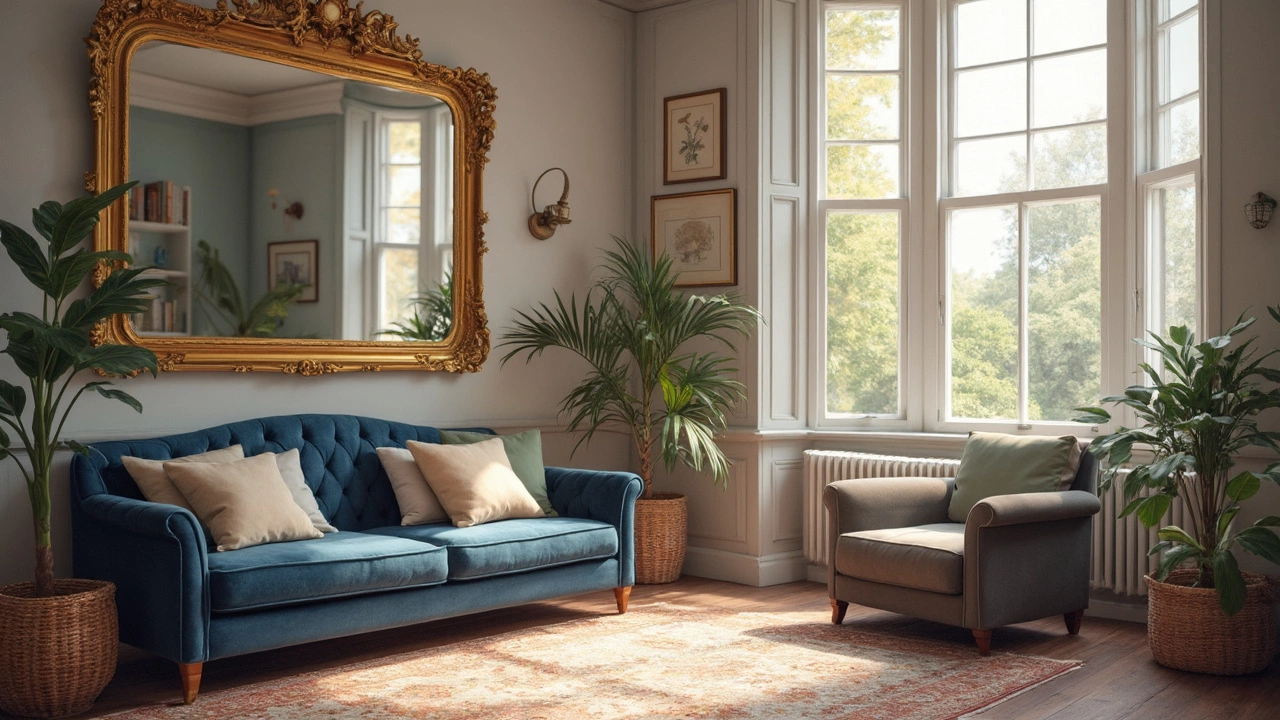Choose Mirror: Picking the Perfect Mirror for Your Home
Did you know a well‑placed mirror can make a small room feel up to 30% larger? It’s not magic, it’s light bouncing around. In this guide you’ll learn which mirror fits which space, how size and shape affect the look, and what magnification you actually need.
Types of Mirrors and Where They Shine
First, sort mirrors into three basic groups: functional, decorative, and hybrid. Functional mirrors are the bathroom medicine‑cabinet style or the full‑length closet mirror – they give a clear, true reflection without any distortion. Decorative mirrors add flair; think framed vintage pieces or oversized sunburst designs that double as wall art. Hybrid mirrors combine both, like a large brushed‑nickel mirror with an ornate frame that still works for daily grooming.
In a bathroom, a plain, moisture‑resistant glass works best – the focus is on clarity for shaving or makeup. For a living room, a large decorative piece can become a focal point, reflecting a couch or a window to push the space outward. Bedrooms benefit from a blend: a simple vanity mirror for dressing and a larger, framed statement piece that adds personality.
Size, Shape & Magnification: Practical Tips
Size matters more than you think. A rule of thumb is to choose a mirror that’s at least half the width of the furniture it hangs above. If you’re mounting above a vanity, measure the vanity’s width, halve it, and pick a mirror close to that number. Height-wise, the center of the mirror should line up with the average eye level of the room’s users – about 150 cm (5 ft) from the floor for most adults.
Shape can guide the vibe. Round mirrors soften sharp angles, perfect for a modern kitchen island. Rectangular mirrors add a sleek, linear feel that works in corridors. Oversized floor‑to‑ceiling mirrors are bold statements for lofts or boutique shops.
Magnification is only crucial for grooming mirrors. A 1× mirror shows a true view, ideal for overall outfit checks. For detailed work like makeup or shaving, a 5× or 10× magnifying mirror is useful. Many vanity units come with a flip‑out magnifier – a handy, space‑saving solution.
When you shop, look at the glass quality. Low‑iron or “extra clear” glass reduces green tint and gives a crisp reflection. If the mirror is framed, check that the frame material matches other finishes in the room – wood, metal, or reclaimed plastic can tie the look together.
Budget doesn’t have to mean a compromise. Store‑bought mirrors often have a thin acrylic backing that looks cheap after a year. Opt for a glass mirror with a solid backing and a simple, sturdy frame. You can often upgrade a plain glass by adding a custom frame later.
Installation is straightforward but beware of the weight. Use wall anchors that match your wall type – plaster, concrete, or drywall. For large mirrors, enlist a friend and a suction cup holder to avoid cracks.
Finally, think about placement. Mirrors opposite windows bounce natural light deeper into the room, brightening up dark corners. In narrow hallways, a tall, slim mirror on one side creates an illusion of length.
With these pointers, you can walk into any store, online shop, or thrift find and know exactly which mirror will do the job. Choose a style that matches your décor, pick the right size for the space, and decide if you need magnification. The right mirror will not only reflect your image but also lift the whole room’s vibe.
-

Choosing the Perfect Mirror for Your Room
Picking the right mirror for your room can be a game-changer in home decor. This guide covers essential tips to help you choose a mirror that fits your style and space. From size considerations to functional needs, we explore how mirrors can transform a room. Discover the impact of shapes, frames, and placements. Elevate your interior design by selecting the perfect mirror.
